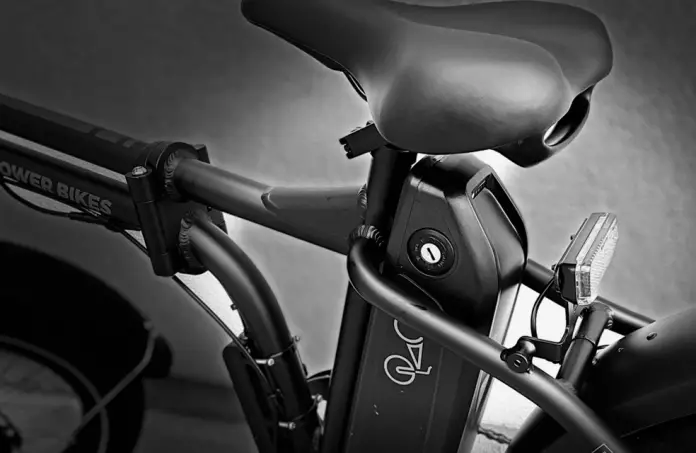Traveling fast and far (and having fun) on your e-bike is hugely dependent upon your electric bike battery. The battery can make or break the electric bike experience. So what should you do if you need a new battery or your battery has lost its charge (and what if you’re far from home)? Can you put any battery on your e-bike as long as it seems to fit?
Unfortunately, e-bike batteries are not universal or interchangeable. An electric bike requires a specific type of battery based on its voltage (V), amps/capacity (Ah), and other features such as size and weight. For example, you can’t put a 48-Volt battery on an e-bike built for a 36-Volt one.
The biggest mistake you can make about e-bike batteries is believing that they’re all the same… even though they look similar.
But this is far from the truth! If you’re trying to replace the battery in your e-bike, you’ll need to make sure you get one that has the correct specifications. Otherwise, your bike won’t work or you’ll cause serious damage to the battery and motor.
In this article, I’ll help you figure out how to replace an old battery with a new one that’s right for your e-bike.
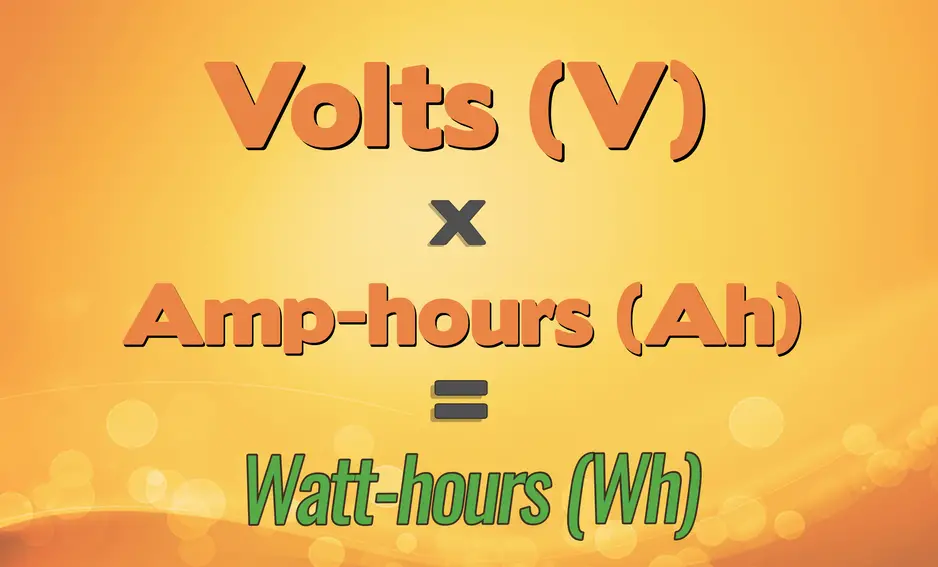
Why Aren’t E-Bike Batteries Universal?
Having one universal battery for all types of electric bikes is certainly ideal. Wouldn’t it be nice to just grab an emergency battery anywhere they sold electric bike batteries? You wouldn’t have to be worried about your battery dying while you were riding because you could pick up a new one in a pinch. And you could even borrow a battery from another e-bike for the day.
Unfortunately, this isn’t how it works. There are so many different kinds of lithium-ion batteries, all with unique specifications. They may differ in voltage (V), capacity (Ah), energy/watt-hours (Wh), size, and weight.
For a quick understanding, what’s ultimately important to know is that Voltage x Amp-hours= Total Watt-hours. Therefore, a battery with a different amount of volts or amps would produce totally different Watt-hours. Further, the volts and amp-hours must not only match the battery charger you’re using (generally the one that comes with the battery) but also the total wattage of the e-bike itself.
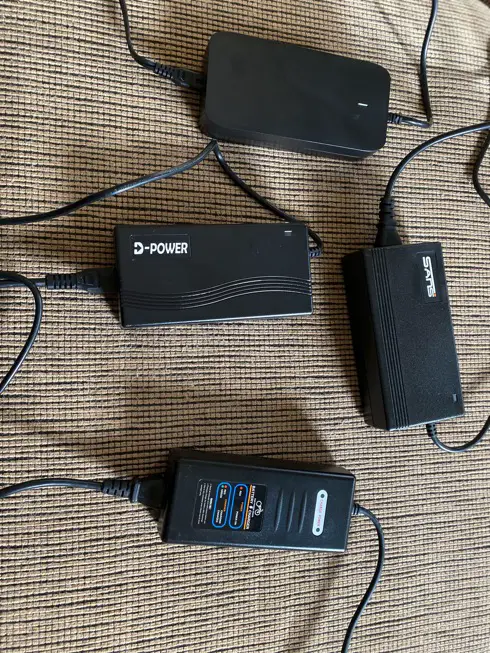
For example, a 48V lithium-ion battery may already be slightly larger and heavier than a 36V lithium-ion battery. And, even if it had the same amp-hours as the 36V bike, it still wouldn’t give out the same Watt-hours. And, there are several other potential problems as well that can be answered by understanding what voltage and amp-hours are best for your e-bike.
What Voltage is Best for an Electric Bike?
Generally, the average voltage (V) for e-bike batteries is 36 volts. This is because the maximum speed of an average human pedaling is around 20 km/h (12 mph). So, a 36-volt battery will help maintain a reasonable and safe speed for someone riding an e-bike. Depending on where you live, a manufacturer is required to follow laws about how fast an electric bike can go… and some laws set maximum speed limits for an electric bike.
However, more and more electric bikes are using a 48-volt battery (in places that the law allows higher speeds, like in the US), especially on higher-performance bikes and/or e-bikes that have a throttle. Why? Because bike riders want more speed!
Let’s not get confused about higher voltage meaning more power (at least not on its own). By itself, higher voltage just offers higher speeds.
But, if you use a battery with a higher voltage than your electric bike needs, it runs the risk of overcharging and may stop working sooner than usual. This is a really good example of why e-bike batteries aren’t universal.

Is a Higher Ah Battery Better for an E-Bike?
Unlike Volts, Amp-hours (Ah) measure a battery’s capacity. In general, that’s how long your battery will last and what range it can travel. But there’s a little more to it.
Higher Ah isn’t necessarily better for an e-bike. Whether or not you need a battery with high Ah really depends on how long and how far you intend to ride. Amp-hours will determine how long your battery will last on a single charge.
Basically, an e-bike battery with 36V and 8 Ah, as compared to one with 46V and 15Ah, won’t speed as fast or be able to go as far on a full battery charge.

Are E-Bike Batteries Interchangeable?
Now that you have a basic understanding of Voltage and Amp-hours, it’s really important to put the two together when considering if electric bike batteries are interchangeable (even though they’re not universal).
Generally, lithium batteries can’t be shared between electric bikes because each bike’s allowed wattage and the Watt-hours (Wh) of the battery may differ.
Just imagine trying to put a C battery in your computer mouse instead of a double AA battery? It simply won’t fit and therefore you know it wouldn’t work. However, batteries on electric bikes may not fit as tightly when bolted onto the outside of the frame.
So, it might appear that you’d be able to replace your old battery with a similar-sized battery on your e-bike.
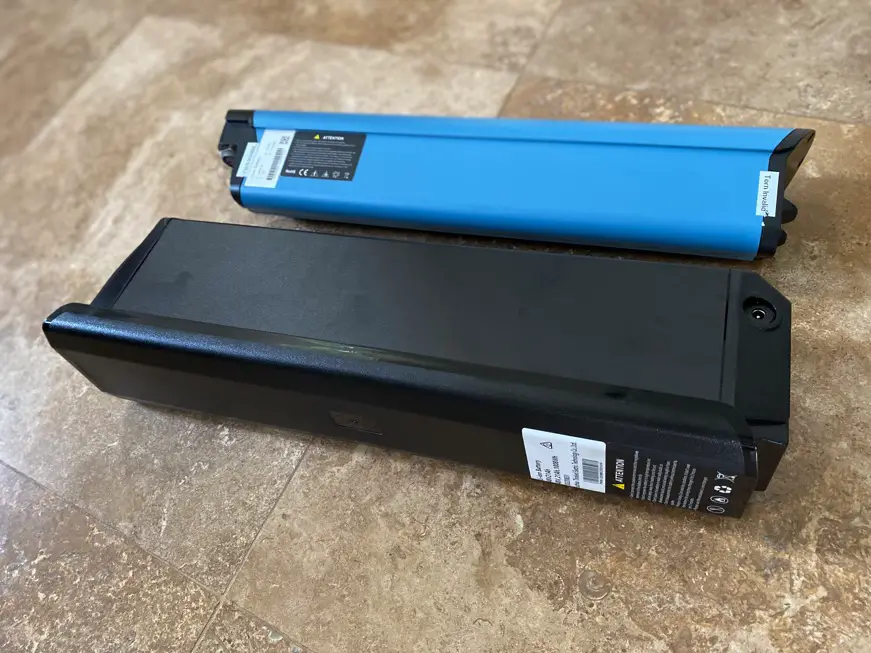
Why can’t I interchange e-bike batteries?
This question can be answered with a simple calculation (sounds tricky but it’s not). You need to calculate e-bike watt-hours (Wh) so that you can compare the total energy of the battery to your electric bike’s capacity.
Again, remember this simple formula: V x Ah = Wh
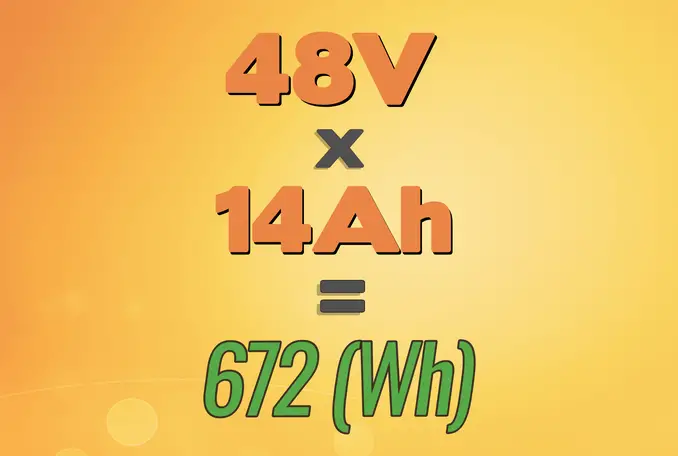
Here’s an example of what could go wrong if you use the incorrect battery:
If a battery is 48V, 14Ah then it puts out 672 total Watt-hours (48 X 14= 672)… like my Rad Power Bike battery. And since my e-bike has a 750 Watt (max) geared hub motor, the battery Watt-hours fall right under the maximum wattage of the bike.
Now, if I were to put a 52V, 18Ah battery on my e-bike (52 X 18= 936), it would overpower my bike’s maximum 750 Watt capacity and quite likely damage the battery and the motor! Then I’d have to buy new parts or replace the bike entirely (which would be a reasonable option given the hundreds of dollars I’d need anyways to replace just the battery and motor).
This is just one example of why you shouldn’t swap one e-bike battery out for another without knowing what’s correct for your e-bike model. Truthfully, there are numerous combinations of volts, amp-hours, and watts that can go wrong if your e-bike wasn’t designed for that combination!
Find out everything you need to know about taking care of your e-bike battery!
What Type of Batteries Do E-Bikes Use?
Battery packs can have so many different characteristics that it would be extremely difficult to have a universal battery for all electric bikes.
Typically, an electric bike uses a Lithium-ion (Li-ion) battery as its main power source. Lithium-ion batteries generally have a long lifespan and a quick recharge time. This makes electric bikes with Li-ion batteries ideal for riding frequently and for long distances. This type of battery lasts for approximately 1000 charges.
So, in other words, they’re perfect for cycling regularly.

And lithium-ion batteries are also much lighter than lead-acid batteries, which will only give you about 300 total charges anyways.
If you’re purchasing a newer e-bike, you’ll find that it typically comes with a lithium-ion battery. So you won’t have to make a big decision about the type of battery, but you’ll still need to choose an e-bike based on the battery output.
Focus on getting an electric bike with a battery that lets you go as fast as you want (voltage) and as far as you want to ride on a single charge (Amp-hours).
And don’t charge using a car battery, solar panel, or generator without learning more first!
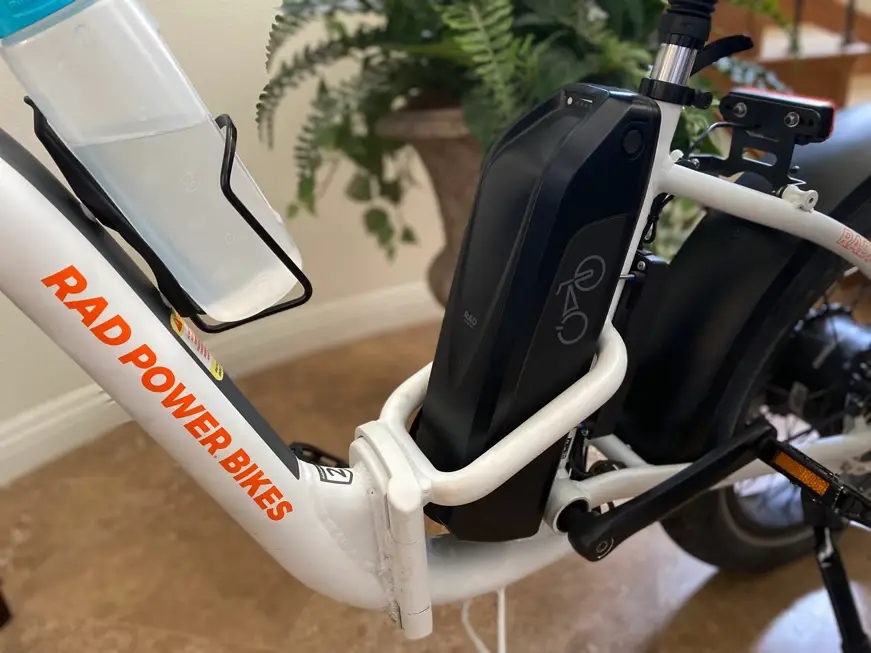
How Can I Replace My E-Bike Battery?
You can get a new battery to replace a non-working or damaged battery by matching its specifications. It must have the same Volts, Amp-hours, and Watt-hours, as well as be the correct size and weight as your old one.
The best way to buy a new e-bike battery is to talk with your bike’s manufacturer or a reputable e-bike shop.
Both Aventon E-Bikes and Rad Power Bikes are reputable dealers who can answer such questions.
And since a battery will cost you about a third of the total e-bike’s cost, make sure you ask the right questions so that you end up a happy bike rider with a high-quality battery that’ll last you for years.
E-Bike Battery questions to ask before you buy
- How far can a lithium battery go on a single charge?
- How long will it take to charge it?
- What is the warranty and how long does it last?
- What should I do to take care of it properly?
- Do you offer any discounts?
Find out: Is it safe to charge your e-bike battery overnight?
Conclusion
I’m sorry to be the bearer of bad news, but electric bike batteries aren’t universal or interchangeable. Therefore, it’s best to understand what your needs are as an ebike owner and how to find a lithium battery that works for your e-bike.
Make sure you’ve read the article in detail to learn what you need to know about your own electric bike battery and how to replace an old or damaged battery.

